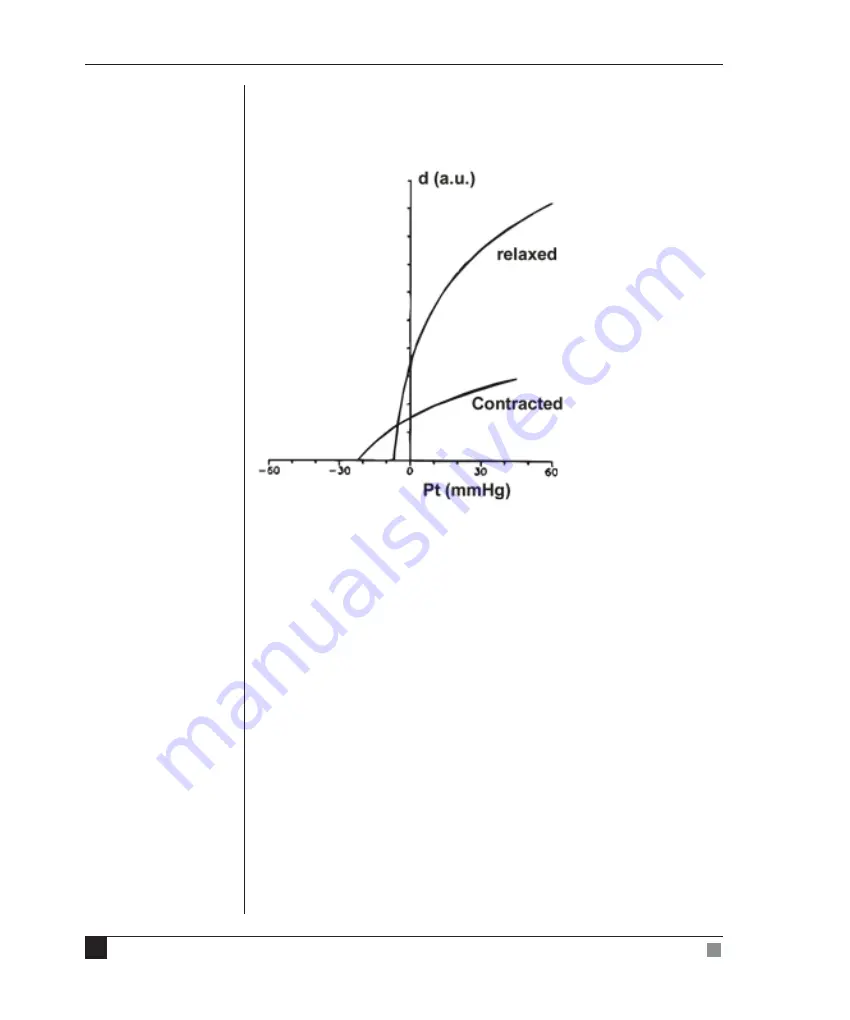
45
Human NIBP Nano
Owner’s Guide
It is important to realize that at zero transmural pressure the artery is not
collapsed. To fully collapse the finger artery requires a cuff pressure larger
than the finger intra-arterial pressure. At zero transmural pressure the
artery is said to be ‘unloaded’.
Volume-clamp method
When the volume clamp method of Peñáz is used, the finger cuff pressure
is not constant but variable. The Human NIBP Nano, therefore, does not
produce calibrated plethysmographs: the cuff pressure changes actually
take away (most of) the plethysmogram. If during systole an increase
is detected in arterial diameter, the finger cuff pressure is immediately
increased by the servo-controller system to prevent the diameter change.
Since the servo-controller system is designed to prevent any change in
diameter, the artery is eff ectively clamped at a certain diameter, the ‘set-
point’. If this diameter corresponds with the unstressed or unloaded state
of the finger artery, transmural pressure is zero all the time. Therefore,
when the volume-clamp method is active at the proper unloaded diameter
of the finger artery, finger cuff pressure equals intra-arterial pressure.
A servo-controller system usually defines a target value or setpoint and a
measured value that is compared with this setpoint. In the servo-controller
the setpoint is the signal of the plethysmogram (unloaded diameter of
the artery) that has to be clamped. The measured value comes from the
light detector. The amplified diff erence between setpoint and measured
value, ‘the error signal’, is used to control a fast pneumatic proportional
valve in the Wrist Unit. This proportional valve, modulates the air pressure
Figure A–2
Stylized p-d diagrams of
human fi ngers, Pt is the
transmural pressure,
d the diameter (a.u. =
arbitrary units).






























